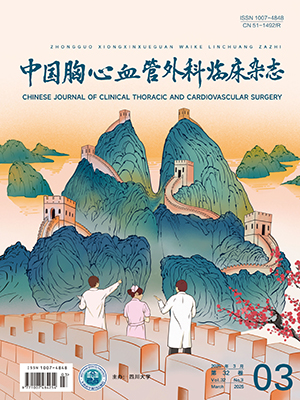Objective To evaluate preventive effectiveness of pocket esophagogastric anastomosis for postoperativeanastomotic leak,stricture and gastroesophageal reflux disease (GERD),and investigate clinical significance of Montreal definition and classification of GERD after esophageal reconstruction. Methods Clinical data of 1 078 patients whoreceived 2 different surgical procedures for resection of esophageal or cardiac carcinoma from June 2007 to June 2011 in our hospital were retrospectively analyzed. In the experimental group,there were 582 patients who received pocketesophagogastric anastomosis,including 403 male and 179 female patients with their age of 60.4±12.6 years. There were 399 patients with esophageal carcinoma and 183 patients with cardiac carcinoma,392 patients receiving esophagogastrostomyabove the aortic arch and 190 patients receiving esophagogastrostomy below the aortic arch respectively. In the control group,there were 496 patients who received conventional end-to-side esophagogastric anastomosis,including 343 male and 153 female patients with their age of 59.2±12.8 years. There were 322 patients with esophageal carcinoma and 174 patients with cardiac carcinoma,317 patients receiving esophagogastrostomy above the aortic arch and 179 patients receivingesophagogastrostomy below the aortic arch respectively. A survey questionnaire was made on the basis of relevant diagnosticstandards to investigate the incidence of postoperative anastomotic stricture and GERD of the 2 groups during follow-up.Results The incidence of postoperative anastomotic leak of the experimental group was significantly lower than that of the control group [0% (0/582)versus 1.0% (5/496),χ2=5.835,P=0.016]. Patients in the experimental group had less severeGERD symptoms,and the percentage of patients who needed antacid therapy for extraesophageal symptoms of GERD ofthe experimental group was significantly lower than that of the control group [1.6% (33/541) versus 12.6% (57/453),χ2=23.564,P=0.000]. The incidence of anastomotic stricture of the experimental group was significantly lower than that of thecontrol group [0.9% (5/539) versus 7.3% (34/465),χ2=25.124,P=0.000],and especially,the incidence of severe anastomoticstricture of the experimental group was significantly lower than that of the control group [0% (0/539) versus 4.7% (22/465),χ2=24.883,P=0.000]. There was no statistical difference in five-year survival rate. Conclusion Pocket esophagogastric anastomosis is better than conventional end-to-side esophagogastric anastomosis for the prevention of postoperative anastomoticleak,stricture and GERD. Montreal definition and classification of GERD is suitable for the diagnosis of postoperativeGERD after esophageal reconstruction.
Citation: ZHOU Aixiang,LI Baotian,QIN Yunliang,LIU Gaofeng,XIE Jiasheng,LI Baojun,ZHANG Qingchun,LIU Jichang.. Clinical Application of Pocket Esophagogastric Anastomosis after Esophagectomy. Chinese Journal of Clinical Thoracic and Cardiovascular Surgery, 2013, 20(5): 560-563. doi: 10.7507/1007-4848.20130174 Copy
Copyright © the editorial department of Chinese Journal of Clinical Thoracic and Cardiovascular Surgery of West China Medical Publisher. All rights reserved




